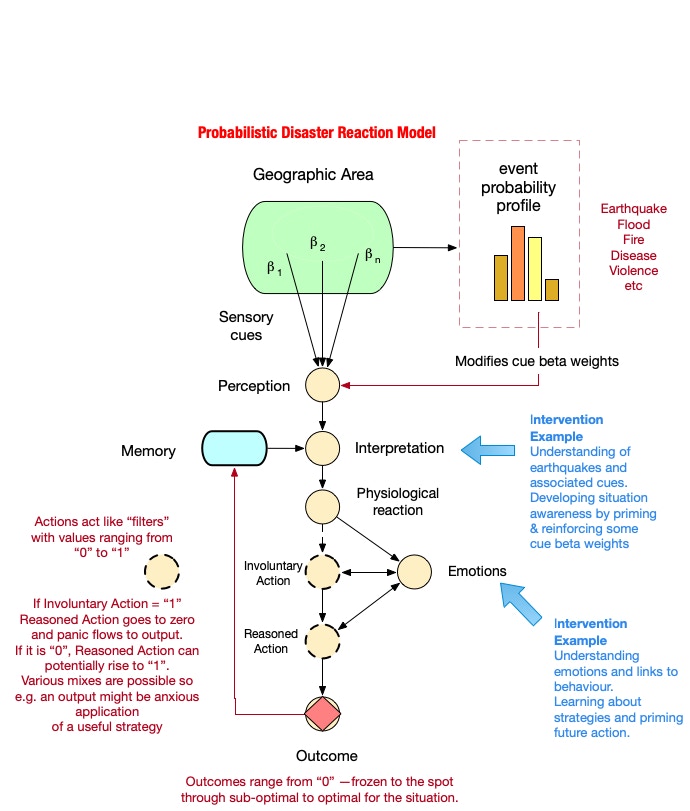Sydney, NSW Australia
Coming Ready or Not:
Planning for the psychological impacts of disasters
The defining feature of a disaster is the level of damage and loss to people and property. While dictionary definitions often describe disasters as sudden events, large-scale damage and loss can come slowly, as with climate change or when a mass of water moves down a river and floods an extensive area days after upstream storms, or suddenly, as in an earthquake.
The risk of being caught in any disaster can vary with geography and the natural features of the landscape and geology. The risk of experiencing an earthquake or tornado varies with global location. The spread of some events, like the COVID-19 pandemic, is less geographically linked; movement of people, goods and materials can transfer them from place to place at varying rates.

The development of this model was heavily influenced by contributions from my colleagues Associate Professors Daniela Racconello and Roberto Burro, along with Dr Giada Vincentini - all from the Department of Psychology at the Unversity of Verona, Italy.
Building resilience
Recommendations for increasing community resilience tend to be a mix ranging from social policy to engineering and logistics. The important topics tend to have “the community” or “the logistic response system” as the units of analysis and discussion.
For psychologists, the question is typically more focused. —The central issue is how to assist individuals in increasing their psychological resilience and ability to cope with potentially destructive events.
In the face of a sudden disaster, the timing and nature of a person’s reactions can make the difference between life, injury, or death.
Important aspects of how a person responds can be collected under the term “situation awareness.” Situation awareness refers to the extent to which a person becomes aware of changes in a situation and interprets those changes as a trigger for appropriate or inappropriate behaviour.
Our goal has been to identify the kinds of pre-disaster training that can assist children and adults in surviving by taking appropriate action when a disaster occurs suddenly or is imminent.
The model suggests two points in the process at which it can be helpful to design interventions aimed at helping adults and children prepare for disasters.
A more detailed discussion of the model and its application is contained in the attached PDF document.

